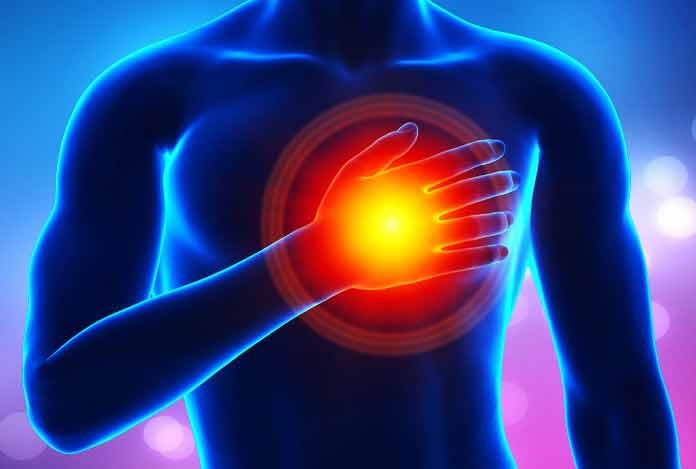
Overview and Statistical Facts
Angina refers to chest pains that happen when there is less supply of blood to heart muscles. It happens when the blood vessels become hardened and narrow due to deposition of a fatty material called plaque. It is to be noted that angina is not a disease but a symptom of an underlying heart disease. It generally goes away quickly but is often a warning sign of coronary artery disease which might lead to heart attack. A person suffering from angina may feel heaviness or tightness in the chest which might spread to his or her left arms, neck, jaw, back or stomach. Shortness of breath might also be experienced by some people. The pain is usually triggered by strenuous physical activity or stress and lasts only for a short duration. It should also be noted that all chest pains are not angina.
It is believed that approximately 7 million people in the US suffer from angina. Men are more likely to suffer from it than women.
In 2008, about 616,000 people died of heart disease. More than 42 million women are living with some or the other form of heart disease, out of which 8 million of them have a history of heart attack and/or angina.
Heart diseases cost the US about 200 billion USD each year. Heart diseases are one of the leading causes of death in the US for people of racial or ethnic groups like African Americans, Hispanics, and whites. For Asian Americans and Pacific Islanders, heart diseases rank second only to cancer.
The chances of developing coronary heart disease increase with age. Men are found to be more prone to heart diseases than women. But in the later years of life, both are almost equally prone to heart diseases.
Types and Symptoms of Angina
There are several types of angina, namely:
- Stable angina or angina pectoris
- Unstable angina
- Variant angina or Prinzmetal angina
- Microvascular angina
1. Stable Angina/Angina Pectoris: Angina pectoris refers to a chest pain or discomfort due to coronary heart disease. It happens when the heart muscles do not get enough blood due to narrowing and hardening of coronary blood vessels, a condition known as ischemia.
It occurs when the heart muscles are deprived of blood and oxygen during strenuous physical activity or strong emotions. Extremely narrowed arteries might supply enough blood to the heart muscles in rest conditions. During exertion, the heart works harder and requires more oxygen which these blood vessels fail to supply.
Common symptoms of Angina are as follows:
- Chest pains, which might spread to the arms, back and other areas
- Shortness of breath
- Nausea
- Fatigue
- Dizziness
- Profuse sweating
- Anxiety
The symptoms of stable angina last for short duration (5 minutes or less) and disappear if the person takes rest or have angina medication.
2. Unstable Angina: Unstable angina is sometimes referred to as acute coronary syndrome and causes unexpected chest pain which generally occurs when the person is resting. The most common cause of unstable angina is decreased blood flow to the heart muscle. This occurs due to narrowing of coronary blood vessels due to fat deposition, called plaques. These plaques can rupture, causing injury to the coronary blood vessel, leading to clotting of blood which blocks blood flow. This is a condition of medical emergency.
Symptoms are:
- Chest pains radiating to shoulder, arm, jaw, back and other areas
- Discomfort in which a patient experiences the sensation of tightness, squeezing,
- crushing, burning, choking or aching
- Shortness of breath
- Sweating
- Sudden onset
- Decreased blood pressure
These symptoms last longer than 15 to 20 minutes and do not respond to a medicine, nitroglycerin.
3. Variant Angina: It occurs when a person is at rest, usually between midnight and morning. These anginas can be very painful. It is a rare form of angina. and it is present only in about 2 out of 100 cases. It is found in younger patients. It occurs due to spasm in coronary blood vessels.
Symptoms are:
- Severe pain in chest radiating to neck, shoulder, back and other areas
- Loss of consciousness
- The symptoms, which occur when a person is at rest, are relieved by taking medicines. There is an elevation of the ST segment in ECG. Typically, the symptoms appear at the same time each day, between midnight and 8 am.
4. Microvascular Angina: It generally points towards coronary microvascular disease (MVD), which is a disease affecting the smallest blood vessels of the heart. This type of angina is difficult to diagnose. It can occur during mental and emotional stress or even at rest, rather than after stressful physical activity. It is more common in women than in men.
Symptoms are:
- Chest pains lasting longer than 30 minutes
- More severe pain
- Shortness of breath
- Sleep problems
- Fatigue
- Lack of energy
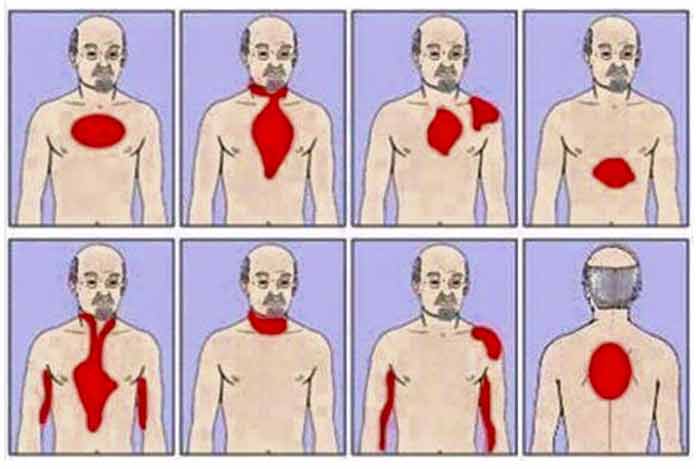
Risk Factors of Angina
Angina is a symptom of underlying heart disease, usually coronary heart disease or coronary microvascular disease. Major risk factors for angina are:
- High cholesterol levels
- High blood pressure
- Smoking
- Diabetes
- Obesity
- Lack of physical activity
- Unhealthy diet
- Age
- Family history of heart disease
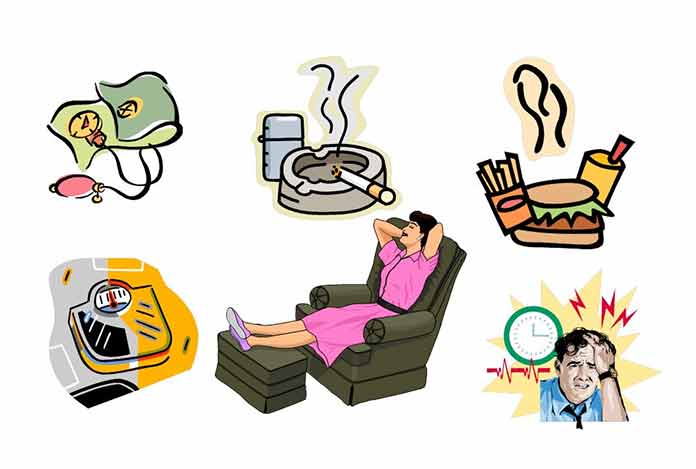
Do I Have Angina?
If you observe tightness in your chest, at rest or during a strenuous physical activity, which is radiating to your shoulder, neck, back or other areas, then you must seek emergency medical help. It might be a sign of angina, which may cause a heart attack.
Your doctor will ask you about your symptoms, if you smoke, your lifestyle, your medical history, what medicines and drugs you are taking and your family’s medical history. They will also measure your blood pressure and weight, listen to the sounds of your heart and chest and perform certain blood tests to determine your blood cholesterol and glucose levels. Certain other tests might also be performed, such as ECG, chest X-ray, and an exercise stress test. A coronary angiogram might also be performed to see whether coronary blood vessels are blocked or not. Only after performing these tests that a doctor can tell whether you have suffered from an angina attack or not.
However, there are other conditions as well which could have symptoms similar to those of angina, such as bronchitis, heartburn, anemia, migraine, headache, GERD (gastroesophageal reflux disease) etc. Only after visiting a doctor the symptoms can be fully understood.

Causes and Prevention of Angina
Causes of Angina:
Angina is caused due to the decreased blood supply to heart muscles. When the heart muscle cells do not get enough oxygen, it leads to the development of a serious condition called ischemia. This occurs due to deposition of fat in the blood vessels. These fat deposits are known as plaques.
- Stable Angina: This type of angina is triggered by strenuous physical activity. Due to plaque deposition in the arteries, the blood supply to the heart muscles is reduced. Such a condition can lead to lack of oxygen in the muscle cells, which causes pain. Such a condition is triggered when there is high demand for oxygen.
- Unstable Angina: When the plaques in a blood vessel rupture, it leads to the formation of blood clot in the blood vessel. This blocks the flow of blood to the heart muscle cells, causing the ischemic condition. It can also be caused due to blood clots that completely or partially block the heart’s blood vessels.
It worsens with time and is cured by rest or usual medications. If the blood flow does not improve with time, heart muscles deprived of oxygen die leading to heart attack.
Such anginas are dangerous and require immediate medical attention. - Variant Angina: It is caused due to spasms in a coronary artery due to which the artery narrows down temporarily. Such narrowed blood vessels reduce the blood flow to the heart and lead to ischemic conditions, causing severe pain. It can occur even when the person is at rest and it causes severe pain. It can be managed with medications.
- Microvascular Angina: It is caused due to spasms within the walls of micro blood vessels of the heart. These spasms cause decreased blood flow to the heart muscle cells leading to the development of microvascular angina.
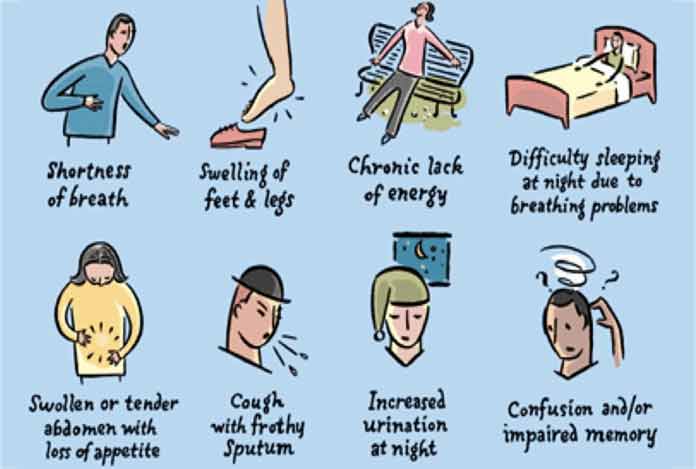
Prevention of Angina:
Coronary heart diseases, which has angina as one its symptoms, can be prevented by the following measures:
- Cessation of smoking
- Controlling high blood pressure
- Reducing blood cholesterol levels
- Being physically active
- Maintaining healthy weight
- Controlling blood glucose levels in case of diabetic patients
- Consumption of balanced diet
- Managing stress

Diagnosis and Tests of Angina
Following tests are performed to diagnose angina:
- ECG
- Stress testing
- Chest X-ray
- Coronary angiography and cardiac catheterization
- CTA
- Blood tests
- Echocardiogram
1. Electrocardiogram (ECG): ECG is performed to detect and record the heart’s electrical activity. It shows how fast or slows the heart is beating along with its rhythm. It is also used to determine the strength and timing of electrical signals.
However, patients who have suffered angina might even show normal ECG.
2. Stress Testing: During this test, the patient is told to do heavy physical activity in order to increase the stress on the heart. This makes the heart beat faster and heart tests are performed. If the patient is unable to perform a heavy physical activity, medicines are given to increase the speed of heart.
This test is used to determine:
- Abnormal changes in heart rate or blood pressure
- Shortness of breath or chest pain
- Abnormal changes in heart rhythm or electrical activity of heart
- Images of heart while at rest and during physical activity are taken to determine blood flow in different parts of the heart. It also shows the pumping capacity of the heart.
3. Chest X-Ray: It is performed to determine signs of heart failure. It can be used to indicate lung disorders and causes of other symptoms which are not related to coronary heart disease.
4. Coronary Angiography and Cardiac Catheterization: Cardiac angiography is a test in which a dye is injected into the coronary blood vessels through a process known as cardiac catheterization. A thin, flexible tube, known as a catheter, is inserted into the blood vessels through the patient’s arm, groin or neck. The tube is threaded into the patient’s coronary arteries and the dye is released into the bloodstream. Special x-ray scans are done while the dye is flowing through coronary arteries to determine blood flow through coronary arteries and heart.
5. Computed Tomography Angiography (CTA): In this test, a dye and special x rays are used to determine blood flow through coronary arteries. It is less invasive than coronary angiography with cardiac catheterization.
6. Blood Tests: Blood tests are performed to determine the levels of cholesterol, sugar, proteins, etc. in the patient’s blood. Levels of C-reactive protein (CRP) is determined in the blood which indicates whether the patient is at high risk of coronary heart disease. Also, hemoglobin levels are determined to figure out if the patient has anemia.
7. Echocardiogram: In this, sound waves are used to produce images of the heart and determine if there are any areas of the heart that have been damaged due to poor blood flow. It is, sometimes, done during the stress test.
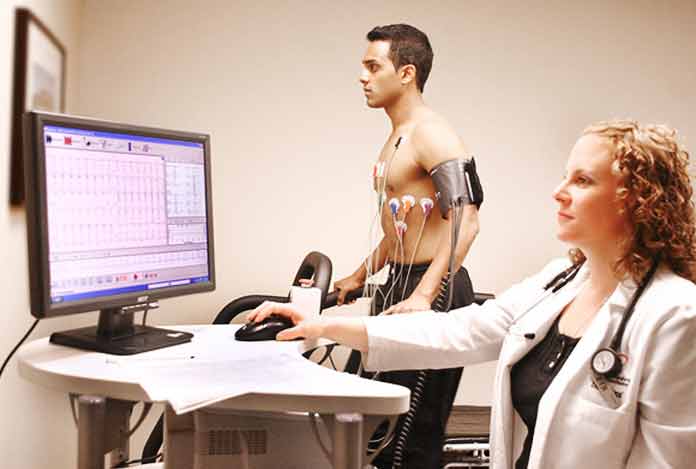
Treatment and Care of Angina
Treatment for angina includes lifestyle changes, medicines, medical procedures, cardiac rehabilitation and other therapies.
The main aims of the treatment are:
- Decrease pain and discomfort
- Decrease the frequency of anginal attacks
- Prevent or decrease the risk of heart attack and death
- Lifestyle changes and medicines are prescribed to manage angina in its early stages.
- When these don’t work, medical procedures and cardiac rehab are done. Unstable angina, however, is a case of medical emergency.
1. Medications
- Nitrates: These are commonly used to treat angina. They relax and expand blood vessels, thereby improving the blood flow to the heart, reducing the heart’s workload. Nitroglycerine is commonly prescribed for treating angina.
- Aspirin: Aspirin in doses of 75 mg to 325 mg as immediate release tablet and 162 mg as an extended-release tablet is used for protecting the patient against angina. It acts as a blood thinner and helps the blood to flow. It also lowers blood clotting ability which decreases the risk of heart attack. It is advised to take aspirin only under medical supervision.
- Clot Preventing Drugs: Drugs like clopidogrel, prasugrel, ticagrelor, etc. can be used to prevent blood clots from forming. They make the platelets less likely to stick with each other.
- Beta Blockers: They work by blocking the effect of adrenalin on heart, which causes slowing of the heart, particularly, during strenuous physical activity and reduction of force with which heart muscles contract. These effects decrease the requirement of oxygen by heart muscles.
- Statins: These are drugs which lower blood cholesterol levels, thereby decreasing the risk of angina. They also help in reabsorbing cholesterol which has accumulated in the plaques. Hence it reduces the incidence of angina
- Calcium channel blockers: These expand and relax blood vessels by affecting the cells of arteries. This increases the blood flow to the heart muscles and prevents the development of ischemic conditions and angina.
- Ranolazine: It is used as a second-line treatment in curing chronic angina. It can be taken along with the medications used for erectile dysfunction.

2. Medical Procedures and Surgery
- Angioplasty and Stenting: It is also known as percutaneous coronary intervention (PCI). In this, a tiny balloon is inserted into the narrowed artery. The balloon is then inflated at the site and a small wire mesh coil, known as a stent, is used to keep the artery widened. This improves blood flow to the heart muscles, thereby preventing angina.
- Coronary Artery Bypass Surgery: In this procedure, an artery or vein from some part of the body is used to bypass a narrowed artery to supply blood to heart muscles which were earlier not receiving blood. This reduces the chances of development of angina. It is followed in unstable and stable angina which does not respond to other treatments.
Image

3. Lifestyle Changes
Lifestyle changes are known to help angina patients. Some of the steps that can be taken are:
- Cessation of smoking
- Maintaining healthy body weight
- Maintaining normal blood glucose levels in diabetic patients
- Avoiding strenuous physical activities
- Avoiding stress
- Consuming healthy food
- Exercising regularly
Caring for angina involves familiarizing the patient and his family about angina. Patient and his family must always be alert of the symptoms of angina so that appropriate steps can be taken in time. Situations that act as triggers should be avoided. Plans should be made for any emergency conditions. The patient should be encouraged to adopt healthy habits.

OTC or Self-Management Methods Available for Angina
There is only one medicine, aspirin, which is available as an over-the-counter (OTC) medication for managing angina. However, it is always suggested to take this only under medical supervision.
For self-managing angina, the following steps can be taken:
The patient and his family must be helped to accept the fact that their life is not going to be the same henceforth. The patient will have to accept the fact that life might come to an end any instant and that he or she might need to take medicines throughout his life. These thoughts might cause anxiety in the patient and his family.
The patient and his family should discover ways to overcome this anxiety and try to improve quality of life. This can be done by taking medicines properly and by following the advice to lower chances of heart disease.
Lifestyle changes must be adopted to decrease the risk of developing or worsening heart disease.
Anxiety or panic attacks must be avoided by the patient after being diagnosed with angina. The patient should identify trigger factors for anxiety and identify the difference between anxiety-related chest pain and angina. The patient should learn stress management skills to manage his anxiety.
The patient should become physically active and indulge in some form of exercise after consulting with a physician. Heavy physical exercises should be avoided.

Natural ways to Cure Angina
Following are the ways through which angina can be avoided:
- Increased Consumption of Vegetables: More consumption of fresh vegetables can help in controlling angina and help in maintaining overall health. Mutton and dairy products should be avoided as they are rich in cholesterol.
- Lemon: Lemon helps in avoiding accumulation of cholesterol in blood vessels, thus prevent narrowing of blood vessels. It helps in preventing angina.
- Garlic: 2-3 cloves of raw garlic in the morning helps in curing angina in a long term. According to a study published in the Journal of Nutrition in 2006, regular consumption of garlic helps in preventing and delaying cardiovascular diseases. It helps in lowering high cholesterol levels and prevents plaque buildup on the walls of arteries.
- Basil or Tulsi Leaves: It is considered as a genuine cure for angina and not just for managing the symptoms. Consumption of tulsi leaves in the morning is known to show a lot of health benefits.
- Onion Juice: Consumption of raw onion juice helps in lowering blood cholesterol levels and decrease chances of angina.
- Citrus Fruits: Citrus fruits are rich in vitamin C which helps in controlling blood cholesterol levels and minimizing the chances of angina.
- Turmeric: It contains curcumin which helps in reducing cholesterol oxidation, plaque buildup, and blood clot formation. It also possesses anti-inflammatory properties.
- Fish Oil: Fish oil contains omega-3 fatty acids which help in reducing triglyceride and cholesterol levels in the blood, thereby improving blood flow and preventing plaque formation.
- Cayenne Pepper: It is helpful in preventing angina and heart attack. It helps in restoring blood flow to the heart as it is a strong blood vessel dilator. It also acts as a blood cleanser and thinner.
- Apple Cider Vinegar: It helps in balancing acid/alkaline levels in the body and contains pectin which helps in maintaining a healthy heart. It is also rich in natural potassium which helps in cleaning and flushing out arteries by binding to the arterial plaque and dragging it out of the body.

Health Tip by Experts
Angina is a symptom of an underlying heart condition which should not be ignored. Proper medical attention must be provided to the patient in time to minimize the damage to heart. The patient must be encouraged to adopt a healthy lifestyle and take proper medications. Steps should be taken to improve quality of life. It is possible to lead a healthy life even after angina.





